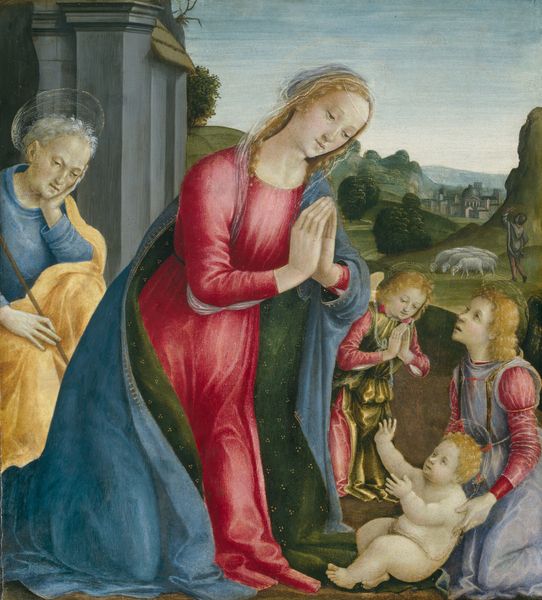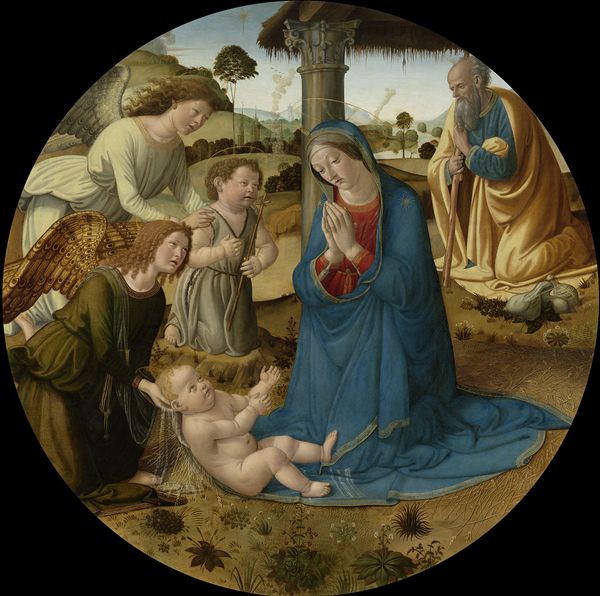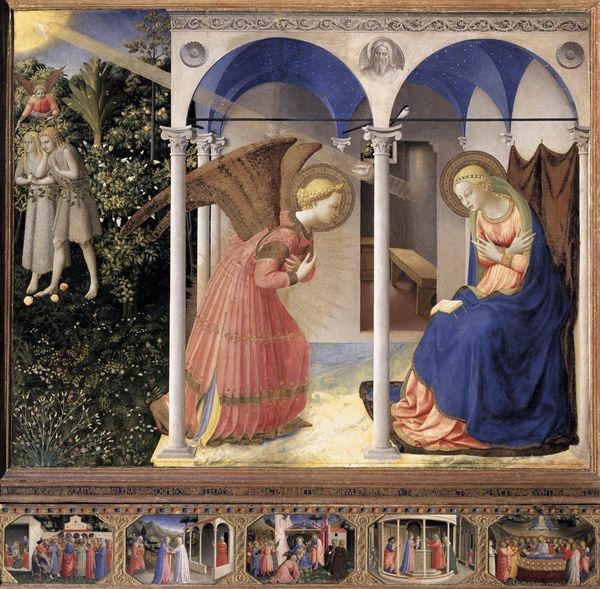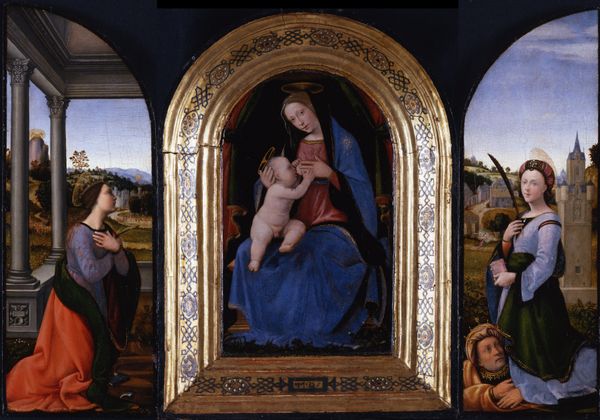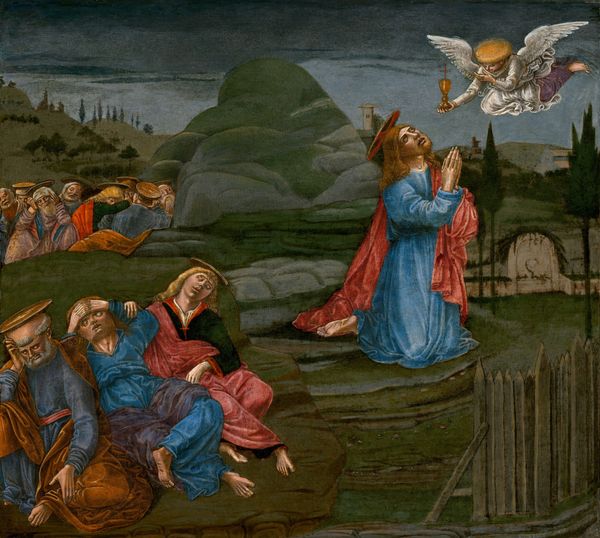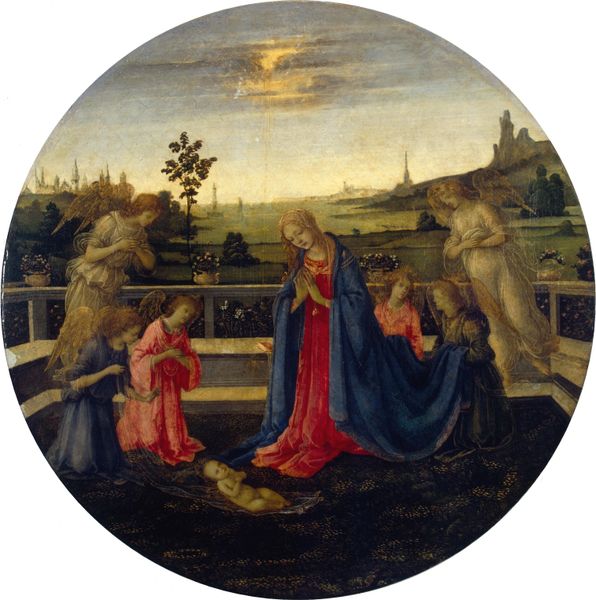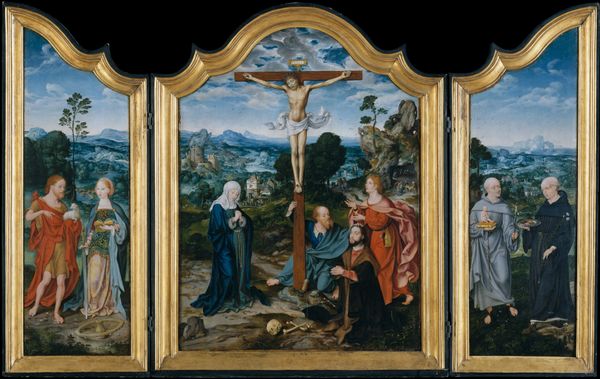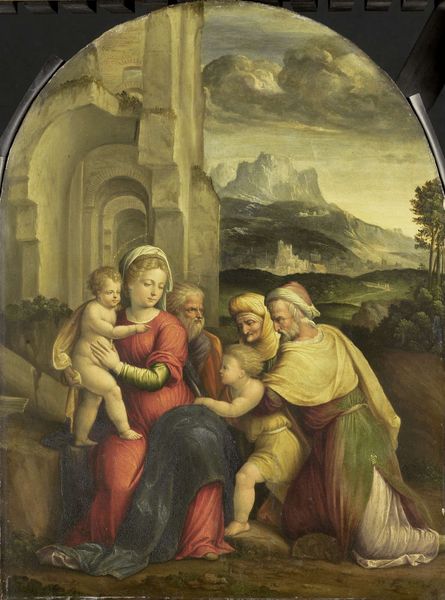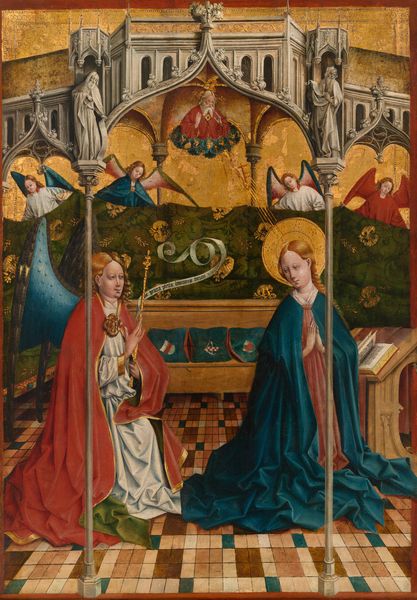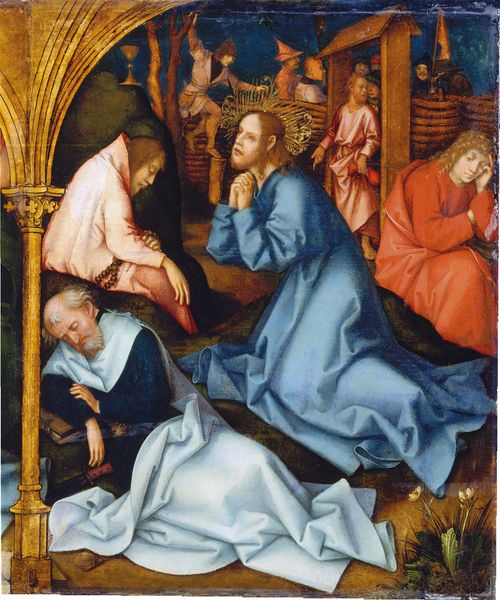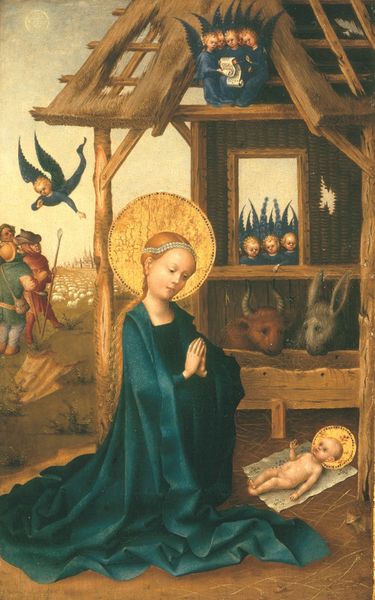
panel, tempera, painting, oil-paint
portrait
panel
tempera
painting
oil-paint
landscape
figuration
oil painting
history-painting
italian-renaissance
early-renaissance
angel
Dimensions: Overall 20 3/4 x 23 5/8 in. (52.7 x 60 cm); painted surface 20 1/2 x 22 1/2 in. (52.1 x 57.2 cm); painted surface of reassembled work 33 1/4 in. (84.5 cm) high at center
Copyright: Public Domain
Curator: Welcome to gallery 624, where we find ourselves before "The Nativity," attributed to Francesco di Giorgio Martini and his workshop, dating from around 1459 to 1501. This piece, rendered in tempera and oil on panel, offers a rich vision of the birth of Christ. Editor: My first impression is of a landscape dreamscape. The figures are serene, almost otherworldly, and there's a blend of the earthly and the divine that’s both comforting and awe-inspiring. But I immediately question the role of Mary here and this passive representation, a figure not claiming agency... Curator: The painting style is characteristic of the early Italian Renaissance, with a focus on perspective, though somewhat skewed by modern eyes, and a keen interest in representing the natural world. Notice the detailed landscape behind the central figures and how it fades into the distance. Editor: Yes, and it also presents this idealised version of domesticity and religious piety. How can we engage viewers to recognize the cultural moment it comes from, rather than encourage replication of its sentiment and message? We need to address the embedded politics of representation here and not assume neutrality of its religious imagery. Curator: Absolutely. We need to address the circumstances and intended audience for works like these, typically wealthy patrons or religious institutions. It also demonstrates how artistic talent was cultivated, with large workshops completing altarpieces collaboratively. This allows us to study shifts in patronage, class, gender roles within a particular setting. Editor: I appreciate how this painting captures that historical intersection. It presents opportunities to encourage contemporary dialogues with the past. As we reflect on "The Nativity," let's contemplate how the power dynamics represented have been questioned, and how the need for gender and racial equity remains crucial. Curator: It is remarkable to study this art in the MET today because of its social context. What meaning it held for its original audience versus our own? This intersection makes visiting museums worthwhile to explore questions such as: How does art reflect and shape our ever-changing understanding of religion, power and representation.
Comments
No comments
Be the first to comment and join the conversation on the ultimate creative platform.
